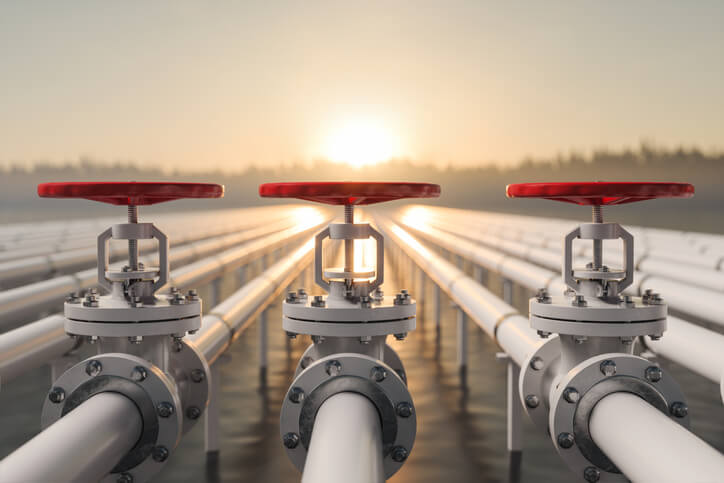The Evolution of Compression Technologies: A Journey Through Time
Compression technologies have fundamentally shaped our modern world, enabling us to perform a vast array of tasks across different sectors. From powering industrial machinery to facilitating medical applications, compressors are indispensable in a multitude of industries, including oil and gas, manufacturing, construction, automotive, pharmaceuticals, mining, and food and beverage processing.
The Origins: Human Lungs as the First Compressors
The concept of compression dates back to ancient times when the earliest “compressors” were nothing more than human lungs. Our ancestors used their breath to blow on hot embers, stoking fires for cooking and heating. This primitive form of compression marked the beginning of humanity’s journey toward harnessing air pressure for practical purposes.
It is fascinating to consider that the act of blowing air to fuel a fire laid the foundation for the complex compression technologies that now drive entire industries.
The 1500s: The Advent of Bellows and Early Metalworking
As societies advanced, the need for more efficient methods of generating and controlling airflow became apparent. The 1500s marked a significant milestone in the history of compressors with the introduction of hand-operated bellows. These simple yet effective tools provided a more powerful source of air movement, crucial for activities like melting metals such as copper, gold, tin, and lead.
Foot-operated bellows soon followed, offering an even more controlled and sustained airflow. This development was particularly important in metalworking, where achieving higher temperatures was essential for refining metals and crafting tools and weapons.
The 1600s: Otto von Guericke and the Birth of Vacuum Technology
The next leap in compression technologies came in 1641 when Otto von Guericke, a German scientist, invented the air pump. His design was groundbreaking because it introduced the concept of creating a vacuum.
Von Guericke’s air pump is recognized as the precursor to modern piston compressors, which are now widely used in various applications, from refrigeration to pneumatic tools. This innovation laid the groundwork for the development of more advanced compression systems that would emerge in the centuries to come.
The 1700s: The Dawn of Mechanical Compressors
The 1700s saw rapid advancements in compress technologies, as the need for more powerful and reliable air compression became evident in emerging industrial activities. In 1762, John Smeaton, an English engineer, designed one of the earliest mechanical compressors – a waterwheel-driven blowing cylinder. This invention represented a significant step forward in the ability to produce a consistent and controlled flow of compressed air.
Another pivotal invention came in 1776 when John Wilkinson, a British industrialist, developed the blasting machine. This device was an early prototype of today’s industrial air compressor and played a crucial role in the development of heavy industries, particularly in mining and metallurgy. Wilkinson’s invention was soon followed by George Medhurst’s motorized air compressor in 1779.
Medhurst, an English engineer, contributed to the evolution of compression technologies by designing a system that would later be adapted for use in compressed air rail systems. His innovations were particularly influential in the mining industry, where reliable and powerful compressors were essential for deep underground operations.
The 1800s: Industrial Revolution and the Proliferation of Compressors
The 19th century, marked by the Industrial Revolution, was a period of unprecedented growth in the use and development of compression technologies. The demand for more specialized compressors capable of operating at different pressures surged as industries expanded and diversified.
In 1829, the first compound air compressor was patented, featuring a design that compressed air in successive cylinders. This innovation allowed for greater efficiency and the ability to achieve higher pressures, making compressors more versatile for various industrial applications. By 1857, compressors had become integral to large-scale projects, such as the French-Italian rail system, where they were used to move substantial volumes of air.
One of the most notable projects of the time was the construction of the Mount Cenis Tunnel in Switzerland. In 1862, compressed-air drills were employed, enabling workers to complete the project in half the expected time. This demonstrated the immense potential of compressors in large-scale engineering projects and set the stage for further innovations.
The late 1800s also saw the establishment of the first compressor plant in Paris in 1888, built by an Austrian engineer. This period was characterized by a surge in patents for various compressor-related inventions, as engineers and inventors sought to capitalize on the growing demand for compressed air in industrial applications.
The introduction of accessories and tools that required compressed air further solidified the importance of compression technologies in modern industry.
The 1900s: The Era of Portable Compressors and Pneumatic Tools
The 20th century brought about significant advancements in compress technologies, particularly with the advent of portable compressors. These mobile units, often mounted on wheels, revolutionized industries by providing a flexible and efficient source of compressed air for various tasks. Large, single-stage compression cylinders driven by steam or oil engines became commonplace, further expanding the range of applications for compressors.
One of the most important developments of this era was the introduction of non-lubricated compressors in the early 1930s. These compressors, which did not require oil for operation, were particularly advantageous in applications where contamination by lubricants had to be avoided, such as in food processing and pharmaceuticals.
In 1935, the screw compressor was patented in Sweden, marking another milestone in the history of compressors. This type of compressor became widely used for its efficiency and reliability, particularly in industries requiring continuous operation.
Screw compressors were soon powering a variety of equipment, including drills, stamping machines, and systems for hauling and pumping materials.
Today: The Modern Landscape of Compression Technologies
In today’s fast-paced and technologically advanced world, compressors have become even more integral to global industry. There is a wide range of compression technologies available, each designed to meet specific needs across different sectors. From small, portable units used in home workshops to large, industrial-grade systems that power entire manufacturing plants, compressors are critical to maintaining productivity and efficiency.
The evolution of air compressor technology continues to accelerate, driven by the constant demand for more efficient, reliable, and environmentally friendly solutions. Innovations in materials science, digital controls, and energy efficiency are shaping the future of compression technologies, ensuring they remain vital tools in the ongoing advancement of global industries.
Future Trends in Compression Technologies
Looking ahead, the future of compression technologies is set to be shaped by several key trends. One of the most significant is the growing emphasis on sustainability and energy efficiency. As industries worldwide seek to reduce their environmental impact, there is an increasing demand for compressors that can deliver high performance with minimal energy consumption.

Advances in digital technology are also playing a crucial role in the evolution of compressors. Smart compressors equipped with sensors and advanced control systems are becoming more common, allowing for real-time monitoring and optimization of performance. These systems can automatically adjust operating parameters to match the specific needs of the application, leading to significant improvements in efficiency and reliability.
Another emerging trend is the development of new materials and manufacturing techniques that can enhance the durability and performance of compressors. For example, the use of advanced composites and alloys can reduce the weight of compressor components, improving their efficiency and lifespan.
The Role of GasPro Compression in the Evolution of Compress Technologies
Since its founding in 2004, GasPro Compression Corporation has been at the forefront of innovation in the compressor industry. Our extensive product line includes two-stage and single-stage sour and sweet service reciprocating compressors, rotary vane compressors, hydraulic compressors, and blower compressors. Each product is designed with a focus on durability, efficiency, and ease of use, making them ideal for a wide range of applications.
GasPro’s commitment to quality and innovation has earned us a reputation as a leader in the field of compression technologies. We work closely with our clients to develop customized compressor packages that meet their specific needs, whether it’s for cost-efficient operation, extended service life, or compliance with industry standards.
Our products are engineered to be low-maintenance and user-friendly, ensuring that our clients can rely on them for years of trouble-free operation. We also offer comprehensive support services, including installation, maintenance, and repair, to help our clients get the most out of their compressor systems.
At GasPro, we are constantly striving to push the boundaries of what is possible with compression technologies. Whether it’s through the development of new products, the improvement of existing ones, or the exploration of new applications, we are dedicated to staying at the cutting edge of the industry.
Conclusion: The Ever-Evolving World of Compress Technologies
The history of compressors is a story of continuous innovation and adaptation. From the simple act of blowing on embers to the sophisticated systems that power modern industries, compressors have come a long way. As we look to the future, it is clear that compression technologies will continue to evolve, driven by the need for greater efficiency, sustainability, and performance.
At GasPro Compression Corporation, we are proud to be part of this ongoing evolution. Our commitment to innovation, quality, and customer satisfaction ensures that we will remain at the forefront of the industry, helping our clients harness the power of compressed air to achieve their goals.
If you’re looking for reliable, high-performance compressor systems, or need expert advice on selecting the right technology for your needs, contact GasPro Compression Corporation today. We’re here to help you navigate the ever-changing landscape of compression technologies and find the solutions that work best for you.

